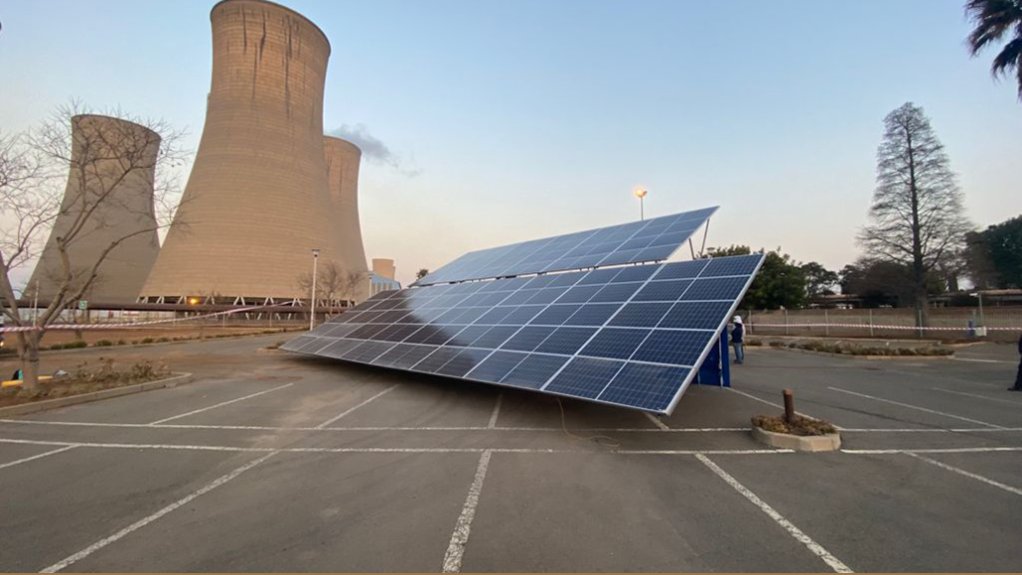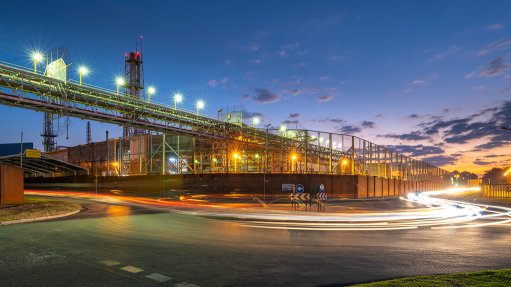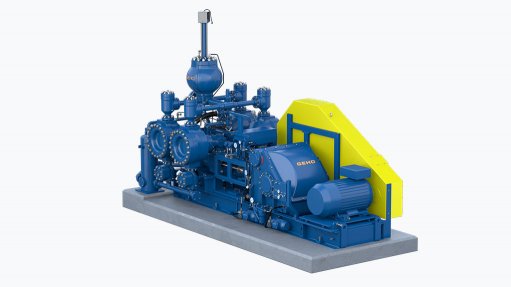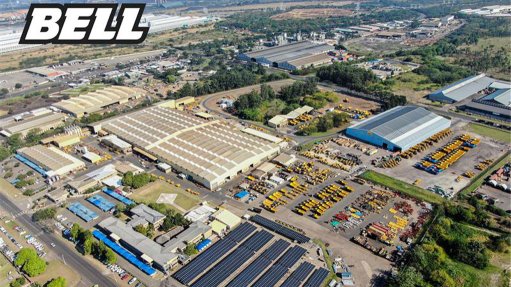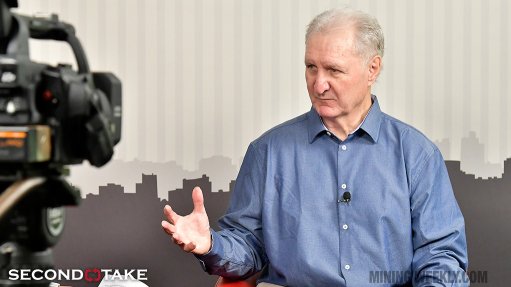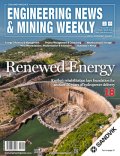Speakers outline Eskom’s transition approach at energy industry day
State-owned power utility Eskom has adopted a “forward-looking” strategy that is designed to tackle the current pressing challenges in the electricity sector, while positioning the entity as a resilient and competitive energy leader, Eskom strategy and sustainability group executive Nontokozo Hadebe outlined during an address at the 2025 Coal and Energy Transition Day on July 23.
She pointed out that Eskom was systematically improving disciplined execution of maintenance, and had recently returned about 794 MW of capacity to service, with about a 96% availability for supply, and reduced loadshedding, thereby improving energy availability and security in the country.
Hadebe noted that, despite some delays, a further three units were expected to return to service by the end of the current financial year.
She informed that, with the National Transmission Company South Africa (NTCSA) now unbundled, Eskom’s focus was shifting to the Generation and Distribution entities; however, this would require legislative intervention to support the transition. The NTCSA started trading on July 1, 2024, Hadebe highlighted.
She emphasised that transitioning was a key priority for Eskom, as the utility optimised the current coal fleet and accelerated clean energy.
She said it was actively strengthening and expanding its grid and distribution network to support access to the grid.
Hadebe noted that the entity was modernising its power system, leveraging technology. This included commissioning 68 MW of battery energy storage, with more than 130 MW in execution, 3 470 MW of wind energy capacity made available through curtailment in the Eastern and Western Cape provinces and 800 000 smart meters installed.
“The need to transition remains a key strategic imperative; however, the country’s context-specific challenges and socioeconomic needs must be considered,” she cautioned.
She outlined these as including limited funding, grid constraints, the socioeconomic impact of coal phase-out, the evolving policy landscape and techno-economic constraints.
She informed that Eskom was focusing on maintaining a balanced and diverse energy mix, with coal still expected to play a significant long-term role in ensuring baseload capacity met demand.
Hadebe clarified that the country’s just energy transition (JET) strategy was not a coal versus renewable energy position, but, rather, presented an opportunity for a considered approach towards transition from high-emitting sources of energy towards cleaner ones.
She explained that the JET strategy was decoupled from the coal power station shutdown plans, to increase focus.
Hadebe mentioned that Eskom supported the country’s transition, as a whole, by strengthening the transmission backbone and distribution networks to allow the increased integration of renewables.
She said that about 14 000 km of transmission lines and respective grid strengthening measures were to be installed by 2034, and there was R133-billion capital located over the next five year to expand the transmission grid. There would also be grid capacity unlocking through curtailment.
Eskom is also targeting 6 125 km of additional distribution network by full year 2030, and upgrades with smart grid technology, including 7.2-million smart meters by 2028.
Hadebe said the utility would leverage various funding models to deliver the required network expansion.
She noted that the utility would roll out clean energy as it gradually ramped down coal plants.
The utility’s generation technologies would transition from predominantly coal-based to a balanced mix, Hadebe said, indicating that it was aiming to achieve over 2 GW of renewable capacity in the near term and over 20 GW by 2035.
She explained that renewable energy upscaling, including battery storage rollout, would be through the combination of repowering older coal-fired power stations slated for ramping down by full-year 2030, and new projects at various other stations and locations.
A dedicated Eskom Renewables unit would aim to ensure accelerated implementation of projects and partnering with the private sector.
Meanwhile, delivering the morning’s keynote address, Silas Zimu, special adviser to Electricity and Energy Ministry Dr Kgosientsho Ramokgopa, pointed out that energy demand would continue to grow as the population grew.
He highlighted how stabilising supply of energy from coal sources was an important first measure to improve energy security and reduce loadshedding. Bringing back units and continuing to maintain coal power plants would be pursued, balanced against bringing renewable energy sources on stream.
Zimu also emphasised the importance of pursuing localisation as part of the latter.
Article Enquiry
Email Article
Save Article
To advertise email advertising@creamermedia.co.za or click here
Press Office
Announcements
What's On
Subscribe to improve your user experience...
Option 1 (equivalent of R125 a month):
Receive a weekly copy of Creamer Media's Engineering News & Mining Weekly magazine
(print copy for those in South Africa and e-magazine for those outside of South Africa)
Receive daily email newsletters
Access to full search results
Access archive of magazine back copies
Access to Projects in Progress
Access to ONE Research Report of your choice in PDF format
Option 2 (equivalent of R375 a month):
All benefits from Option 1
PLUS
Access to Creamer Media's Research Channel Africa for ALL Research Reports, in PDF format, on various industrial and mining sectors
including Electricity; Water; Energy Transition; Hydrogen; Roads, Rail and Ports; Coal; Gold; Platinum; Battery Metals; etc.
Already a subscriber?
Forgotten your password?
Receive weekly copy of Creamer Media's Engineering News & Mining Weekly magazine (print copy for those in South Africa and e-magazine for those outside of South Africa)
➕
Recieve daily email newsletters
➕
Access to full search results
➕
Access archive of magazine back copies
➕
Access to Projects in Progress
➕
Access to ONE Research Report of your choice in PDF format
RESEARCH CHANNEL AFRICA
R4500 (equivalent of R375 a month)
SUBSCRIBEAll benefits from Option 1
➕
Access to Creamer Media's Research Channel Africa for ALL Research Reports on various industrial and mining sectors, in PDF format, including on:
Electricity
➕
Water
➕
Energy Transition
➕
Hydrogen
➕
Roads, Rail and Ports
➕
Coal
➕
Gold
➕
Platinum
➕
Battery Metals
➕
etc.
Receive all benefits from Option 1 or Option 2 delivered to numerous people at your company
➕
Multiple User names and Passwords for simultaneous log-ins
➕
Intranet integration access to all in your organisation



